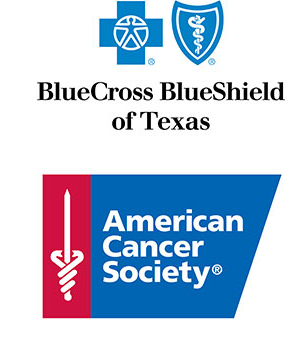July 2018
Cancer Prevention: The Added Value in Adolescent Immunizations
 Human Papillomavirus (HPV) is a very common virus. The Centers for Disease Control and Prevention (CDC) estimates that about 79 million people are currently infected with HPV in the U.S. and about 14 million people in the U.S. get a new HPV infection every year1. More than 40 percent of people become infected during their lifetimes with certain “higher risk” types of HPV that are associated with cervical, vaginal, vulvar, anal, throat and penile cancers2.
Human Papillomavirus (HPV) is a very common virus. The Centers for Disease Control and Prevention (CDC) estimates that about 79 million people are currently infected with HPV in the U.S. and about 14 million people in the U.S. get a new HPV infection every year1. More than 40 percent of people become infected during their lifetimes with certain “higher risk” types of HPV that are associated with cervical, vaginal, vulvar, anal, throat and penile cancers2.
Recommended Vaccine Doses
Vaccination is a safe and effective way to prevent infection from these higher risk virus types. The CDC, American Cancer Society, American Academy of Pediatrics and others recommend that children ages 11 to 12, and less than 15 years of age, get two doses of HPV vaccine – rather than the previously recommended three doses – to protect against cancers caused by HPV3. The second dose should be given 6 to 12 months after the first dose3. Research demonstrates an advantage to vaccinating at this age since there is a stronger immune response against HPV infection compared to older teenagers and young adults.
Healthy People 2020 is a national health initiative that has a set a goal for 80 percent of all U.S. adolescents to receive tetanus-diphtheria-acellular pertussis (Tdap) booster, one dose of meningococcal (MCV4) vaccine and complete the HPV vaccination series beginning by age 134.
Better adherence to the schedule of recommended vaccines by clinicians and a two-dose vaccination sequence for those beginning HPV vaccination prior to age 15 (as opposed to a three-dose sequence) have improved HPV vaccination rates in recent years.
Strategies to Improve HPV Vaccination Rates
To further improve HPV vaccination rates, consider these five research and expert-based strategies:
- Provide a strong recommendation for all vaccines.5 Parents trust their providers’ recommendations. A confident recommendation from their child’s provider is a proven strategy to increase both a parent’s knowledge about HPV and their consent to vaccinate. In fact, when providers don’t recommend HPV vaccination as often and consistently as other adolescent vaccines, parents may think HPV vaccination is unnecessary.
- Keep the primary message focused on cancer prevention. Educate parents about the diseases that can be prevented by adolescent vaccines and talk about HPV vaccination in terms of cancer prevention. Research shows that parents are more likely to vaccinate against HPV infection when providers focus on the HPV vaccine’s cancer-prevention benefits6.
- Administer vaccines together.5 To increase vaccination rates, experts recommend that providers administer the HPV vaccine at the same time they give other adolescent vaccines.5 For 11 and 12-year old patients, it is common to administer Tdap, HPV and Meningococcal vaccines together.
- Use all opportunities to immunize.5 Avoid missed opportunities to administer the HPV vaccine. Research shows that providers tend to underestimate the challenges associated with adolescent vaccine compliance7. Since adolescents may be more likely to seek medical care for focused complaints, review a patient’s immunization status during all office visits. Do not limit immunizations to well-child examinations or immunization-only appointments.5
- Use decisions support and appointment reminders tools.5 Schedule next-dose appointments before patients and their parents leave the office. Appointment reminder tools that alert parents to an upcoming appointment (or to follow-up on a missed appointment), and providers’ use of electronic medical record decision support prompts can increase immunization compliance rates.
These practice strategies will help ensure children receive all recommended vaccines on time. For additional information, please go to cdc.gov/vaccines.
Sources:
1CDC. Basic Information about HPV and Cancer. Accessed Jan. 5, 2018.
2Chesson HW, Dunne EF, Hariri S, Markowitz LE. The estimated lifetime probability of acquiring human papillomavirus in the United States. Sexually Transmitted Diseases. 2014; 41(11): 660-664.
3CDC. Human Papillomavirus (HPV) ACIP Vaccine Recommendations. Accessed Dec. 20, 2017.
4Healthy People.gov. Immunizations and Infectious Diseases. Accessed Nov. 27, 2017.
5Bernstein HH, Bocchini JA, AAP Committee on infectious diseases. Practical approaches to optimize adolescent immunization. Pediatric. 2017; 139(3): e20164187.
6Malo TL, Gilkey MB, Hall ME, Shah PD, Brewer NT. Messages to motivate human papillomavirus vaccination: national studies of parents and physicians. Cancer Epidemiol Biomarkers Prev. 2016; 25(10): 1383-1391.
7Perkins RB, Clark JA, Apte G, et al. Missed Opportunities for HPV Vaccination in Adolescent Girls: A Qualitative Study. Pediatrics. 2014; 134(3).
